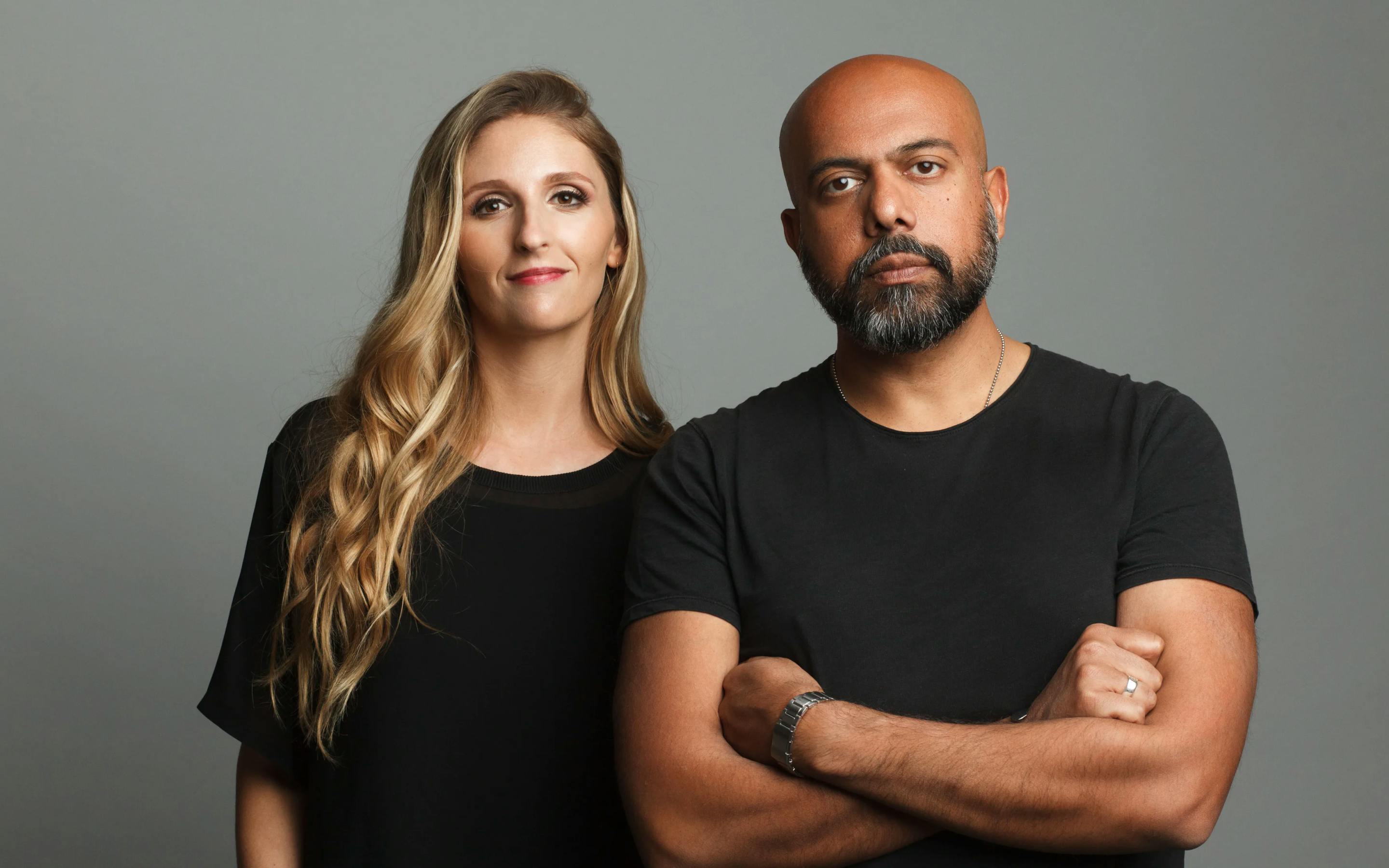
27 January 2020
|
Input Magazine
The iPad’s original software designer and program lead look back on the device’s first 10 years.
We chatted with design power couple Imran Chaudhri and Bethany Bongiorno about the tiny tablet that could.
Ten years ago, Apple introduced one of the most influential products of the company's modern era: the iPad. After years of struggling in internal development, and seeing the smash success of its siblings the iPhone and the iPod Touch, the iPad finally debuted. It made promises to replace everything from notepads to cash registers to textbooks to conventional computers—some of which it was wildly successful at and some of which it struggles to manage even today.
While consumers pick up an iPhone for social media and communication, a Mac for work or homework, and an Apple Watch to track their fitness, the iPad remains a confounding product that most users buy and then find a use for. And yet, they love it.
Regardless, the iPad is a staple of the modern tech landscape, and it’s hard to remember a time when we saw it and thought, “What is that? A large phone?” Two people who’ve known the iPad longer than anyone are Imran Chaudhri and Bethany Bongiorno, the married founders of the mysterious new tech start up Humane, who met while working at Apple on the iPad and related projects. For the tenth anniversary of the iPad, Input talked to them about its strange development, its biggest feature flops, and how it has changed the world.
Input: Tell me a bit about your history with Apple and the iPad.
Imran Chaudhri, Former Director of Design on the Human Interface team: I came to Apple in 95 as an intern in the Advanced Technologies Group. When I finished school in 97, I came to Apple and Steve was there after the NeXT acquisition and he was going through and cutting and trimming the fat at Apple—and ATG was a place that he wasn't a huge fan of. He wasn't a huge fan of research for research sake and I wasn't either, which was kind of an interesting thing. I always wanted to really, really ship products and ATG really wasn't about that. Steve laid off everybody in ATG and I was kind of left to figure out what I was going to do. I started emailing Steve some ideas and we started working closely together and the relationship formed a lot of products, the revitalization of the Mac, going on to the iPod, the development of multitouch to the iPhone and iPad and, post, to a bunch of stuff like the Watch, the AirPods and HomePod, etc. All things we finished before I left a couple of years ago. I met Bethany working on the iPad. She joined the year and a half before the iPad started.
Bethany Bongiorno, Former Software Engineering Director: I joined in 2008, actually, right after they shipped the first phone. I joined immediately after that and started as a project manager on the iPhone. There was a very small team back then; we sat kind of in one hallway. [The phone] was definitely a startup within Apple and I was brought on board because the project manager that was working there really didn't like working with designers and really didn't like working at the higher levels of the stack. She preferred kind of working at a lower level; the core operating system and the kernel and things like that.
Then very quickly after that, they told me that the real reason they had to hire me was because Steve had this pet project that he was really excited about and they needed somebody to lead that effort because the team really needed to remain focused on development of iPhone. They needed to kind of spin up a startup within a startup that would be a small team to build this new project codenamed K48. K48 was hardware and Wildcat was the codename for the software. They asked me to lead that initiative, to build the engineering team and to lead the effort for the K48 project, which ultimately became the iPad. Then eventually I took on MacOS. We had a big team of people and I worked on many things with Apple over the years.
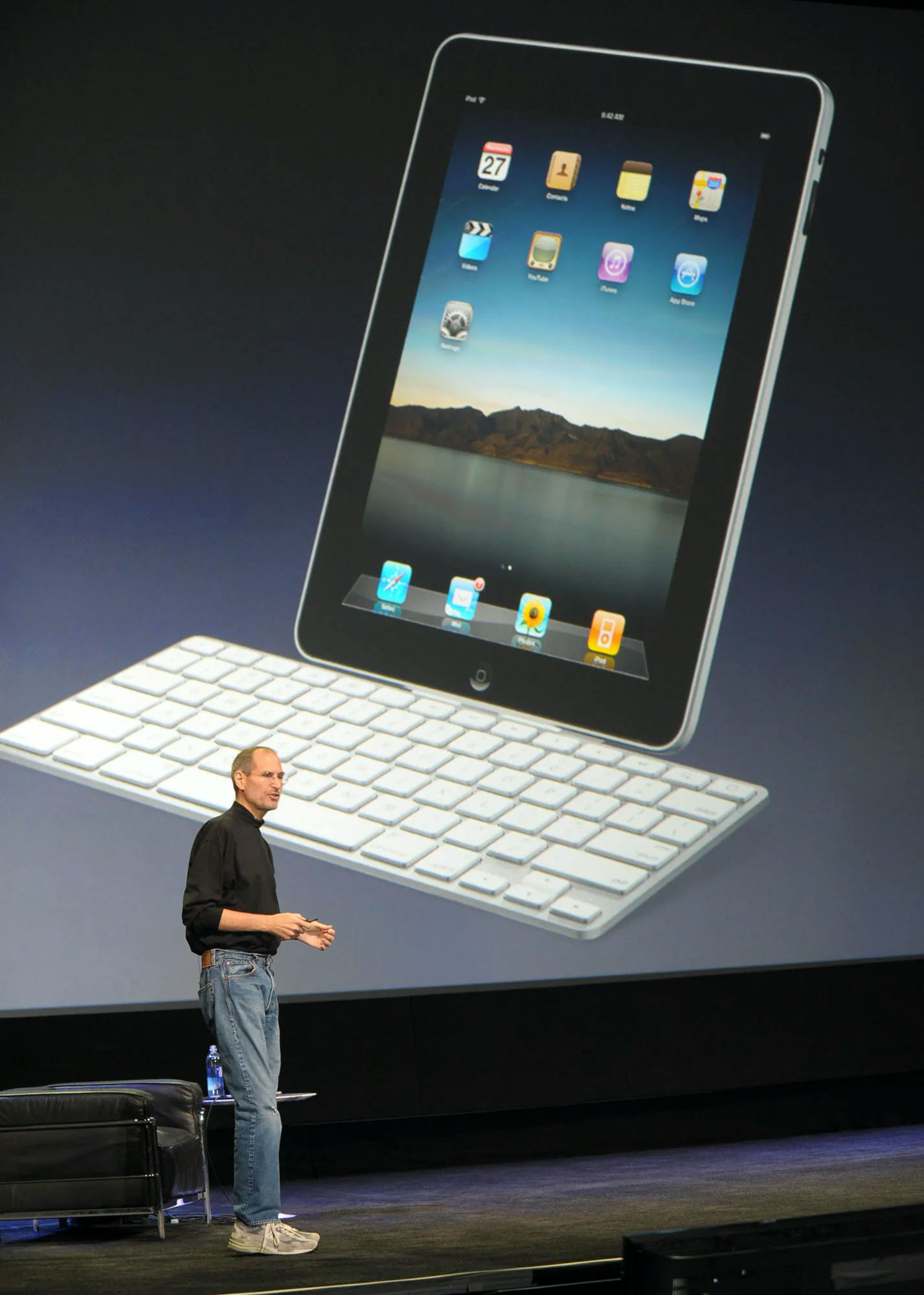
MediaNews Group/Bay Area News via Getty Images/MediaNews Group/Getty Images
Input: When you guys were working on the iPad, in those early days when a few of the iPhones had shipped, obviously the reaction was huge. Was there a centralized idea of what you were working towards or was it like, “Okay, let's just blue sky this and do some experimentation and see where we want to end up.” Or, at the beginning, was it like “We want it to be basically this user interaction in this shape”?
Imran: We always had a good understanding of where we wanted the iPad to be in people's lives. The story of the iPad goes way back beyond before the phone. It started out as this project called Q79. Q79 was the product that was built around multitouch exploration. So we were, at the time, looking at “How can we actually move computing forward? What's wrong with the Mac? And what's keeping it from being really, really more responsive and more direct?” A lot of those questions are answered in terms of “How do we actually achieve a more direct and more responsive input through multitouch?” and that program was built around creating a product line called Q79. At the time, it was looking at bringing a multitouch screen to a Macintosh laptop. Specifically the iBook, at the time. It turned out that was a really, really expensive endeavor and it just wasn't really going to be successful for Apple to build a super expensive computer coming off of having released the Cube, which didn't do well. We kind of pulled away from that effort and focused on a much smaller thing, which was the phone. When we resurrected the iPad, we knew that it was always designed as a computer and it was literally the perfect playground for multitouch. The phone was the first delivery mechanism but we always knew that we wanted a desktop class face to run applications for multitouch.
Input: Apple doesn't strike me in its design or its project choices as a very reactionary place. The feeling I get when I look at Apple products is that they're looking both into what could be immediately used in someone's life and then also what's going to be useful to the company to be positioned as in ten years. The Watch and AirPods are platform agnostic, the iPad is an excellent window into cloud computing or gaming, etc. How much of that is strategic and how much is it that Apple takes so much time doing polish and so much time iterating that it appears that way externally?
Imran: I think some of the products that you're mentioning are born at different times of Apple's lifespan and the way of doing things has changed over the years. I think that sometimes impacts your ability to execute things well. But in an ideal way, when I think that Apple was really executing in a way that was really effective for the customer, it was really strongest when it was envisioning a way for people to use their products in their lives versus the other way around. Actually, as a design philosophy, that's really important for me and concrete and germane to how we think about things at Humane. We always need to look at what the real customer needs, even if the customer doesn't understand where things are going.
Bethany: Steve really had a way to force the entire ecosystem around our products to move in a direction that we wanted. So while it may seem like we were perfectly placed for these things to come online, in reality most likely we were behind the scenes kind of pulling the strings. Steve—and the team, Imran and our team—when we brought people in, we were very clear on the direction that we felt they needed to go. We were the ones telling them “This is how you need to evolve your platform. This is how you need to evolve your ecosystem and use our tools to give the customer the best solution.” With news, you know, Steve was the one calling up The New York Times and calling up The Wall Street Journal and calling up these magazines and saying “You need to do this. You need to build these applications. You need to make this a priority. This is the future. This is where we all should be going.” He definitely had this vision of not only owning our products but owning where the customer experience went overall.
Gaming is a great example of that for the iPhone. When we built the iPhone, you know, building games for a touchscreen device like that was something that that market had no idea how to do. So when we were building the App Store, we had to develop applications internally. And Imran actually helped build this game called Touch Fighter, which used the touchscreen to basically drive this plane. Then Imran also had the idea of “Hey, let's take this accelerometer,” which was in the phone purely for the rotation of images from landscape to portrait, and said “Let's take this accelerometer and let's open it up and have hooks to allow game developers to use that to enhance the gaming experience.” So they built this Touch Fighter game that used the accelerometer. Then they brought this game to a bunch of game developers and said “This is how you build games for this platform. This is where gaming is going.” And they said, “Well, where are we going to put the A/B buttons? Where are we going to put the joystick?” I was telling them “There are no buttons. The entire screen is the button. There is no joystick. Use the accelerometer.”
I think in a lot of ways we set the tone for where everything should go, and so I think that's why it felt like a beautifully crafted piece of music, if that makes sense.
Imran: I think you kind of have to start evangelizing the promise of new platforms for people to really get it and then and only then you start to create the future that you're envisioning.

MediaNews Group/Bay Area News via Getty Images/MediaNews Group/Getty Images
Input: When the iPad launched, it hit really big and hard. A lot of imitators showed up and it permeated culture in an interesting way where it's now hard to imagine that multitouch was just being used on a phone before. But was there stuff in the production that you felt didn't succeed? Or dead ends that you went down, that you were like “Oh, this isn't going to work. We spent a lot of time on it but this just doesn't fit into people's lives”?
Bethany: Yeah, I think what's interesting about being a part of, you know, developing a totally new platform and a totally new product category—which the iPad was one example of many times that we've done that—is that the whole process for building it isn't a straight line. It was incredibly iterative. And in fact, we redesigned and redesigned, and redesigned, and reimplemented, and reimplemented, and reimplemented experiences and applications on the iPad up until the point that we shipped. A lot of it was us internally as a test bed using it and saying “This isn't working. This isn't fitting what we think is the right direction for the product category that we're building.” There were a lot of things that weren't working as we were building it that we completely threw out, fully implemented designs that we had started with, to redefine, and redefine, and redevelop as we were doing it. I definitely think there were some things that we felt were really important and some things even on the hardware side that we thought were really important that people ultimately didn't really use. And a lot of it, I think, was because it was a little bit too early. I would say the camera import was one that I think we thought was really important and wasn't used to the extent that I would say we thought it was going to be.
Imran: I think camera stuff was two interesting ones. When it was first designed, we were imagining how people were going to use it in this space. So we created this dock that gave you the opportunity to mount it to a keyboard and so that it could look like an iMac class thing. Again remember, we were always designing this as a computer to begin with, but it wasn't as powerful as a computer at the time. One of the things that Steve was really interested in was using the iPad as a photo frame. So if this thing is sitting [in a dock] in your kitchen or sitting in your living room—it's sitting there at an angle that can be viewed as a photo frame and these images can be streamed to the iPad and people can benefit from this really dynamic quarter-sized screen that is giving them something when it's idle.
The reality is that it was such a personal device that it spent more time in your bag or next to your bed stand or, you know, next to you on your sofa than it did sitting kind of idle presenting itself—and those are things that you don't really get until you actually see what people do with it. People dictate the direction of the product.
“It was a funny conversation when we started seeing people taking photos on vacation. I don’t think we actually thought people would use it that way.”
Bethany: We talked about the hope that it would be kind of this photo frame, like ‘“How are they going to get the photos on it?” We actually didn't believe that people would walk around taking pictures with their iPad. It was actually a funny internal conversation when we started seeing people outside taking their iPad with them and taking photos on vacation. I don't think we actually thought people would use it that way—and they ultimately did. But what we decided was that there had to be some way to get your photos onto it and so we developed a hardware exchange to allow you to insert an SD card and download your images. That actually was something that came in really late and it was a lot of work for the team to kind of scramble to make happen. I don’t think ultimately it was something that really took off in the way that we thought it would. This was way before we built iCloud photos and things like that.
Imran: I think the speed of the networks and the speed of the bus ended up being a lot faster than the size of the images that people were using to transfer back and forth from the iPad to make it all worth it.
But the [iPad] camera is super funny. That's the other thing that we didn't anticipate being so big. But it was a segment of the population at the time that really was using the camera more than anything else. So I remember very clearly at the 2012 Olympics in London, if you looked around the stadium, you saw a lot of people using an iPad as a camera and generally that was people that just needed to have a bigger viewfinder for vision reasons, etc. Then seeing that, we went back in and redesigned the camera experience on the iPad—recognizing that this is going to be a thing that we just can't get people away from because they want this larger viewfinder.
Bethany: Yeah, we spent a lot of time on the photo UI and I think it was something we were really proud of in iPad 1.0. We did a lot with multitouch and, if you remember, we had the beautiful stack that kind of expanded and contracted with pinch. We saw this iPad as like the perfect delivery mechanism for multitouch and we really played with that idea. And it was funny because it didn't start out that way in terms of how the apps were being developed. When we did our first iteration of app design, I would say that it wasn't as playful. It wasn’t dependent on these really beautiful multitouch interactions. But what we ended up shipping, I think we were really proud of the photo experience. We did think it was really important that we created this kind of really fun, interactive view. And I think it worked really well.
Imran: That one in particular was designed by a good friend of ours called Mike Matas and, as Steve was getting sicker and in poor health, that was one of those things that he really enjoyed the most. The photo stuff.
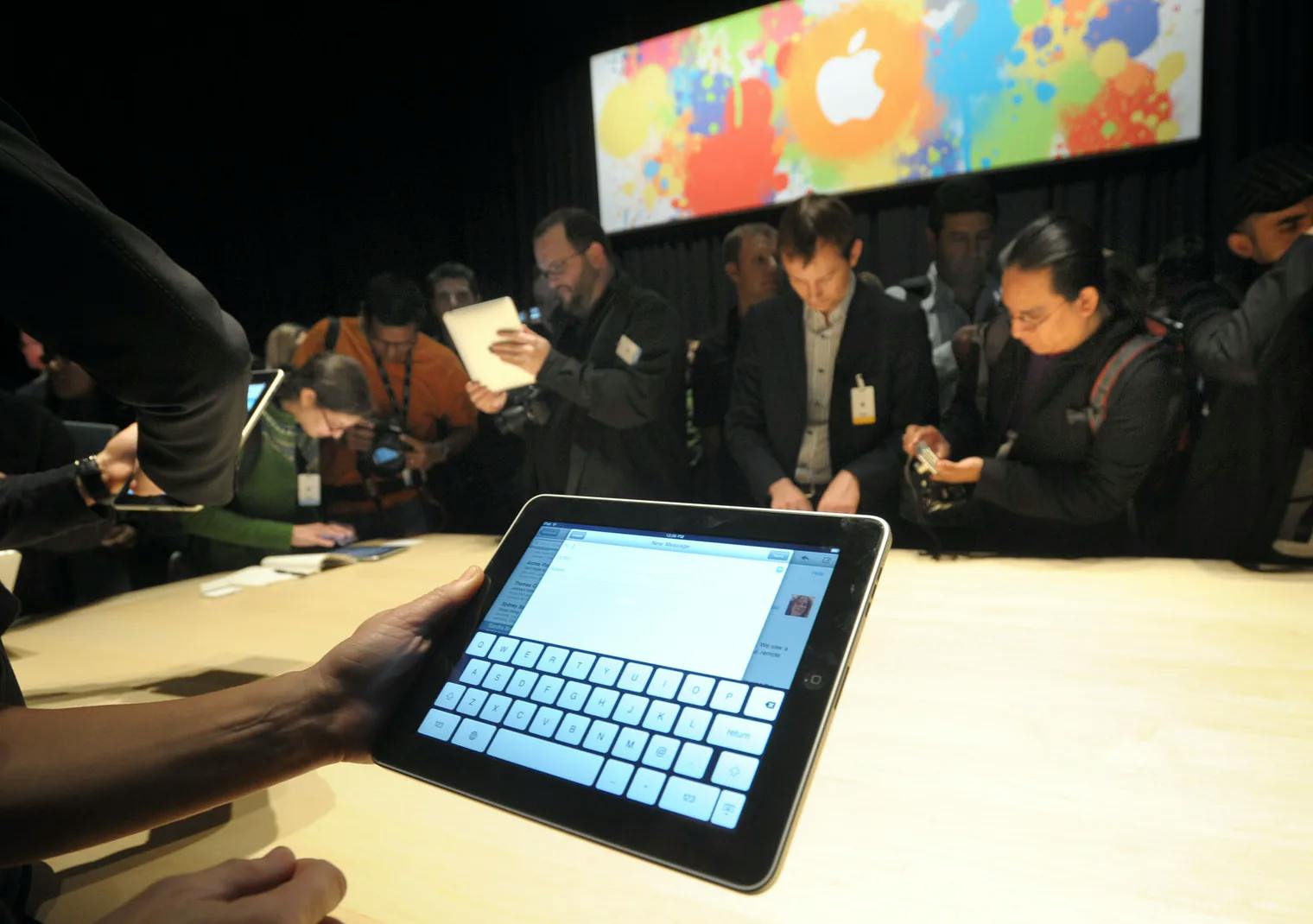
MediaNews Group/Bay Area News via Getty Images/MediaNews Group/Getty Images
Input: When the Apple Pencil eventually came out, people reacted like "Finally, this is an admission that we need this." But to me it struck me as the technology for the right kind of stylus hadn't really been ready yet. And multitouch was just a better human interaction for most applications. Was a stylus even a consideration when first building the iPad—even for artists?
Imran: No. You know, it wasn't a consideration at all. We always felt that the fidelity of touch was always going to be enough for you to do what you wanted to do. But the thing that was really driving a lot of the explorations in the Pencil were using the Pencil as a controller so that you could drive the software and get the most out of it. We put a lot of sensors into the Pencil that allowed you to replicate different angles of the point of your pen. So the rotation, that you could use to create a really defined calligraphy, then also [you were] able to take the Pencil and go from its point to its side to really enable high fidelity shading. We built those degrees of operation into the Pencil so that people could have that enriched level of input. It was meant to be used in concert. So imagine the way you twist a piece of paper as an artist would—as you're drawing and adjusting your pencils. So those two things work hand in hand. As with any tool, people come up with different use cases for them and I think such was the case for the Apple Pencil when they opened it up for developers. The imagination of developers drives a slew of amazing things. So you started to see great note-taking applications come forward, which wasn't really the point, so to speak, of the Apple Pencil, but it was an enriched use case that came out of it.
Input: Why do you think people hate using Android on tablets but love using iOS?
Imran: There's a craftsmanship that goes into building compute devices that, especially when we're trying to emulate experiences like with the Pencil or experiences like multitouch that require a certain fidelity, there's a frame rate requirement. There's a thinking requirement. All of that really goes down into the work of the engineering team—along with design—that tends to really make the best experience—to make all of the hiccups that you experience on other platforms just go away. You know, things like really incredibly high refresh rates for scrolling and really incredibly high refresh rates for panning that at the end of the day take a lot of work but are invisible to the customer, I think. Maybe that's kind of what you're getting at?
Bethany: I would say that I think that, you know, Imran and I often talk about software being like the soul of the product, right? I think that when you look at something like a tablet or even a phone—that is a very personal product. You're using it in more personal ways. It feels more close to you. You're feeling more connected to it. I think when there feels like there's a lack of depth and when it feels like there is like a lack of that soul, I think it doesn't feel as good. And I think people have a higher bar for what they're looking for on more personal products.
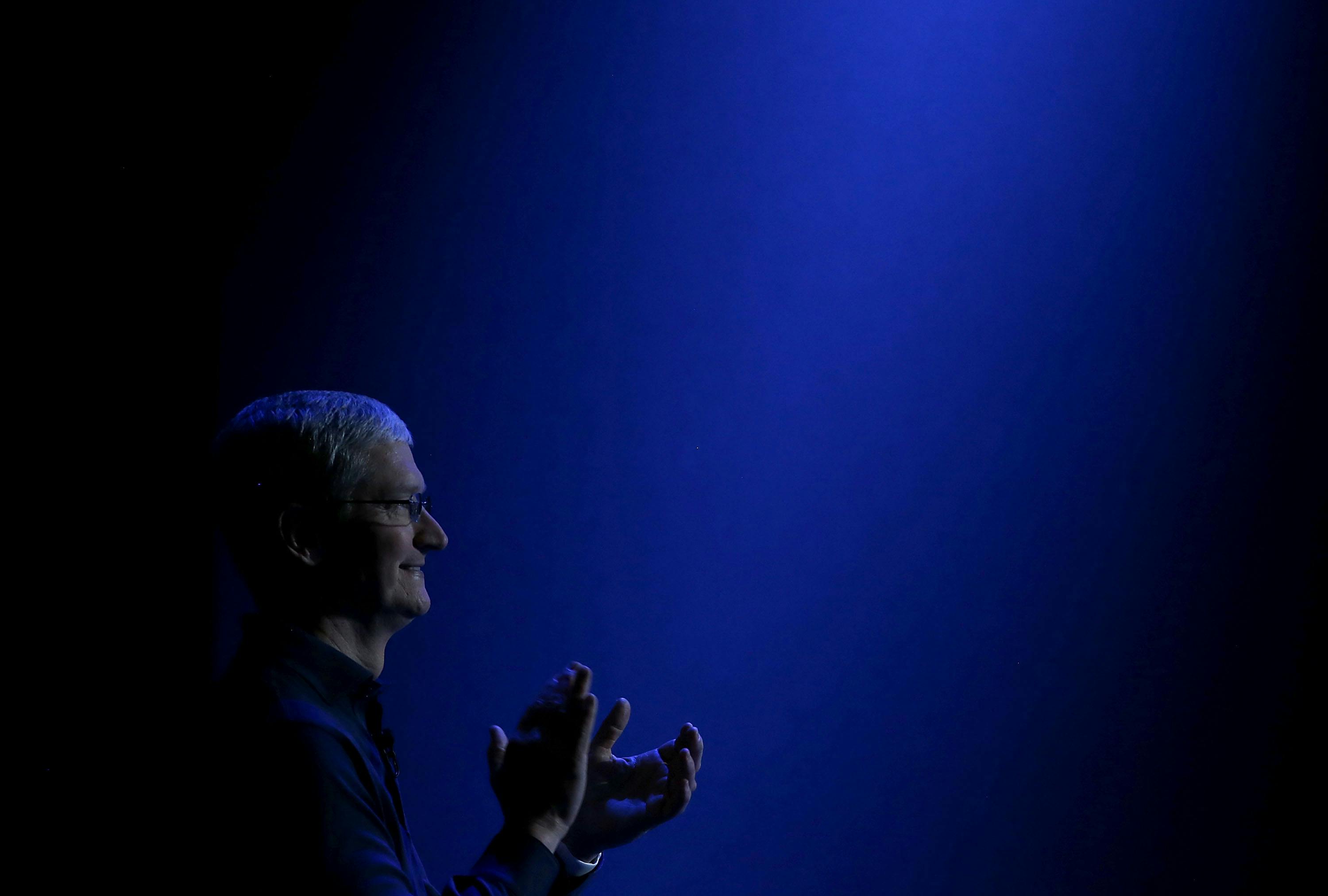
Justin Sullivan/Getty Images
Input: There's a lot that has been said about the differences between Steve Jobs and Tim Cook. Generally, those takes strike me to be guesses by people with very limited information—but as people that worked very closely through both eras, did you feel there was a huge difference in the leadership style? And if so, what do you think was the cause of that?
Bethany: There's no doubt that Tim has built a very successful company and has brought a lot of wealth to Apple shareholders and to the company overall, and I think that's a testament to the fact that he is the best in the world at operations is he's incredibly innovative on operations. But his specialty and his skill set is not in building innovative products, right? Product definition and product development. I think that's something that is just a fact of the change in leadership between him and Steve and the kinds of things that Steve really cared about versus the things that Tim really cares about. And I think for people like us who are, you know, really on the creative side and really want to push things—that was definitely more in line with Steve's mission than it was Tim's.
Imran: Yeah, I think you always find different passions that drive people when they lead organizations. I think one of the things I love a lot about Tim's passions is his passion for philanthropy and giving back to a community. Apple is in a great place to do that now and I'm really excited to see them do a lot of that. In Steve's days, Apple wasn't as well off, so that wasn't something that was a focus for Steve. But I think the way Tim is doing that is incredibly remarkable. I hope it continues.
Input: We all know with 20/20 hindsight what the history of the iPad is 10 years later. But if you were to take a guess at 10 years in the future, do you see the iPad evolving to replace the Mac? Do you see it being a portal to cloud or streaming services? What do you think is the next big step for that platform?
Imran: I think it'll be interesting for all of us to watch and see how Apple evolves the iPad. But, you know, I think one of the struggles that customers have with the iPad right now is really trying to figure out what role it plays in terms of a portable class computer. You have a traditional desktop computer or a traditional laptop computer—and where does the iPad fit in? You know, I would hope and I think they would continue to evolve it to a point where the iPad does end up doing a lot more that the Mac [currently] does and that the Mac redefines itself as more of a professional tool and the iPad defines itself as more of a mass consumer computing platform. I think that would be almost like a natural progression. But we'll see where they go. I mean, there's some great people there that are really passionate about refinement and, you know, I think they're doing a decent job with that.
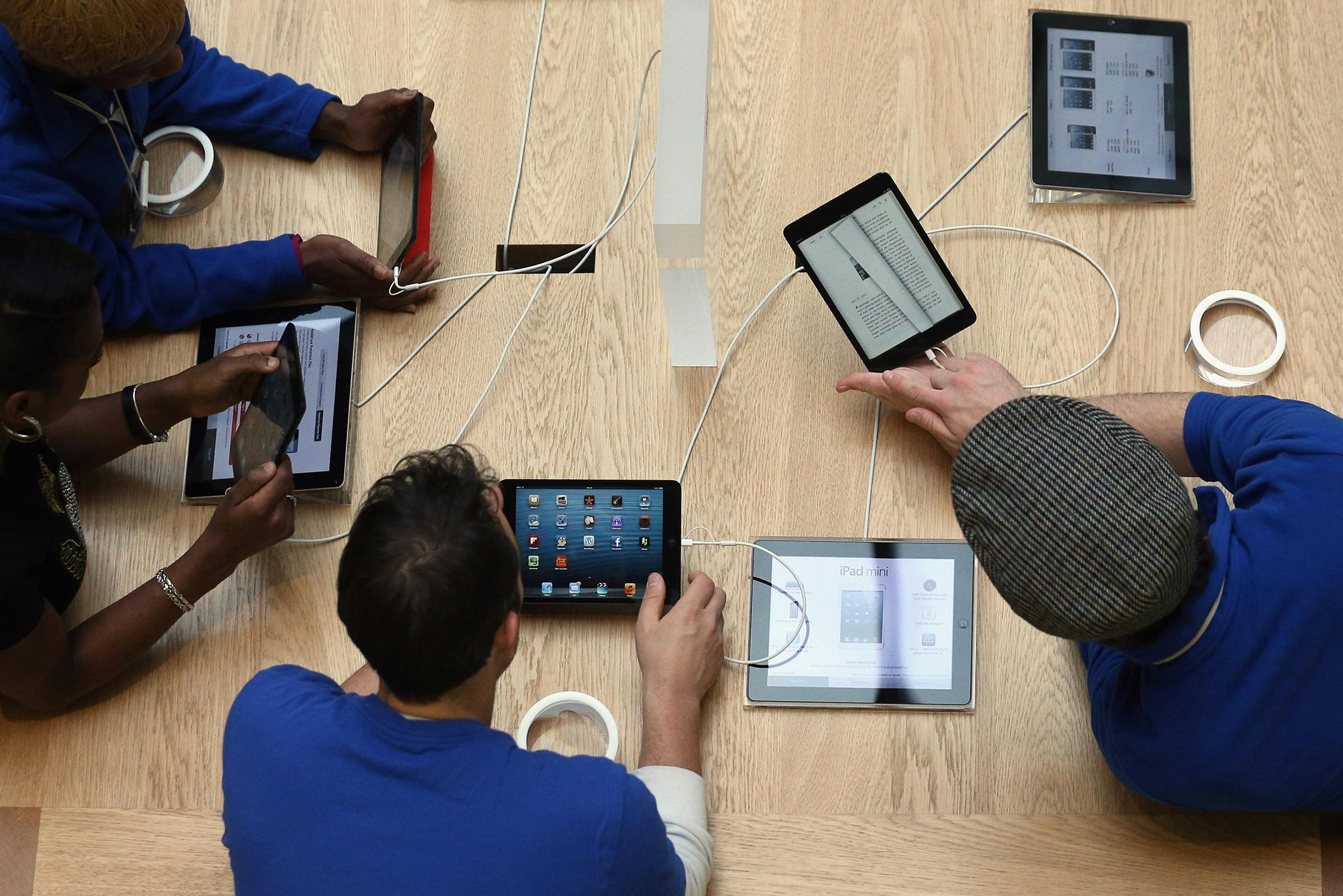
Oli Scarff / Getty Images
Input: You're both working on a new project at Humane. I was wondering why did you feel it was time to leave Apple after you'd spent so long there and had created products that you could see had such a massive impact on the world? What was the impetus to step away from such a huge, influential company and position?
Bethany: Obviously we feel really fortunate to have been a part of some huge things there and really enjoyed our time at Apple and obviously still have a bunch of close friends that are there and are huge supporters. But I think, you know, for everybody there is a time where you feel like it's time to move on and time to do something different. We had kind of done the song and dance enough—we had built many, many phones many times over—and I think [we] felt like we really wanted to take some time off and really think about what we felt was the next thing and what we felt was the future of computing. And we always knew that we wanted to go off and do things our own way and build our own company. I think we had ambitions to do that. [We were] not really sure what that meant early on, but it just came down to a fact of, you know, when the right time was. I think when we both realized it was the right time to do that and make the jump, we did.
We took some time off to really just kind of reflect on our experiences, reconnect with family and take care of ourselves and do things that you kind of need to do before you begin the next journey. I used to tell Imran that we had to get home base and everything sturdy before we took that spaceship, which would be the next step in building Humane. And so our focus was always on what we thought was gonna be the future of computing and looking at what the market was investing in . . . what were other people building, where was the money going and trying to figure out, like, is this the world we want to live in? I think we looked around at, you know, what was being built and where the money was going and felt that we had a better idea. We had something that was more innovative, was more ambitious, was the type of risks and ambitious undertakings that we were used to doing in the past and that we had the drive to do again. And and that kind of set out for us to build Humane and bring a team together to do it.
Imran: I think anytime you really endeavor to do something, you have to sort of break away and spend a lot of time figuring out what that actually is. And so we spent a lot of time looking at different emerging technologies and the opportunities there in terms of how those could be incorporated in the types of experiences that we were looking to bring over. Those are fundamental things like artificial intelligence and computer vision and machine learning. You know, I think stuff that isn't particularly anybody's wheelhouse, but things I think we wanted to go off and imagine and do on our own. And I think that's kind of what we're doing at Humane—is to really go through and explore the opportunities for new computer experiences built around those types of things.
Bethany: I think when you when you don't have the weight or the gravity of an existing platform and existing ecosystem and you can kind of shed those constraints and really think about "How would we build something from the ground up independently?" and "How would we do that, leveraging these incredible emerging technologies?" and really think about what we think the future of computing should be. And if we look at the phone as like, you know, it's 13 years old now. The iPhone is nearly 13 years old. I think we felt that if that was going to be the pinnacle of computing, then that would be unfortunate. We really wanted to kind of be able to start anew and think about where we felt things should be going.
Input: What is your biggest point of pride about your work on the iPad? And what would you say is your biggest regret about either your work or the product in general?
Bethany: I mean, I'll say that my biggest point of pride was that, you know, the iPad team was a startup within a startup. We really were able to pull off a pretty impossible feat with a very small team with hardware that, at the time, was really underpowered for what we needed it to be. We had a lot of engineering feats that we had to overcome as a collective group between design and engineering to make it happen and I think given that it was Steve, one of the last projects that he was really deeply involved in, I feel a lot of pride that we were able to to be successful for him in his vision and what he wanted. That's something that I hold on to as being something that I'm really proud of.
Imran: I think that the team worked at an incredibly impossible feat. It's not easy to create a new computing platform and especially one that means so many different things to so many different people. And I'm really proud of the fact that we were able to start that and have that trajectory continue through today and that this product in particular means so much to so many people. It is the way people communicate. For families with kids who suffer from autism, it allows them and allows their kids to achieve some level of comfort. Then also some level of communication. It is the way we experience our families at a distance. It's an amazing learning tool. It is so many things to so many people. And that is what great computing is all about.
Bethany: We have a daughter who's twelve and she was an iPad baby. She used an iPad super early on in her life. I think that what the iPad did was bring this level of computing to the masses in a way that the phone wasn't even able to do. You had people who were young children using iPads up to people that were a hundred years old picking up an iPad and knowing how to use it. I think it really was something that brought a lot of positive things to a lot of people. And so I think that's a really good point. Something we're really proud of.
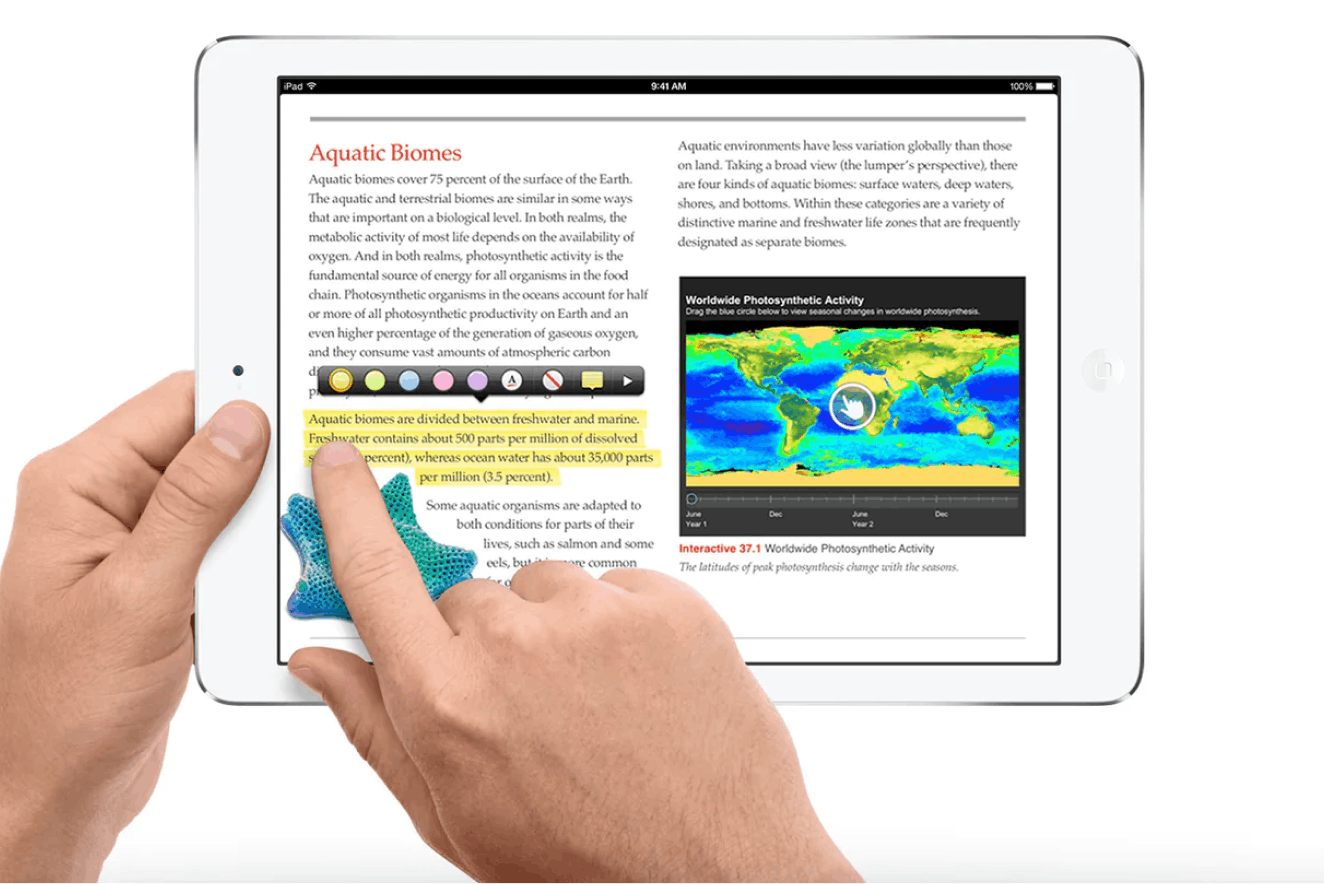
Apple
Input: And do you have any regrets at all?
Imran: Regret is so multilayered.
Bethany: I would say one regret is that it became really hard after we shipped the iPad to continue to push it forward in the way that I think Imran and myself and others at the company really wanted to. The gravity of the phone was so big—and it still is so big, right? It makes it really hard. Because, again, we were a small team. I think people think that we had a huge amount of people working on these products, but we were a startup within the company and the iPad was a startup within the startup. And so it became really hard, I think, to push it forward in maybe the way that I wish we could have. And so it took a little bit longer than what we would have liked to really see that platform push forward towards being more of a laptop killer, which I think we're seeing a lot of progress on now. I think one regret would be that we didn't figure out a way to keep that momentum going in a way that I would have liked.
“Steve had in his mini-brief ‘I really want to be able to use this for mail while sitting on the toilet.’”
Imran: I think what we originally envisioned was designed as a consumption device. One of the things that Steve had in his, like, mini-brief for it was "I really want to be able to use this for mail while sitting on the toilet" and that level of consumption and ease was something that went into us wanting it to replace your newspaper and wanting it to replace the books in your life. And I think the one regret that I have is that we weren't as successful in going through and replacing the textbooks that kids have to use today in school. I think we started there, but we never could really push off on that. I think a lot of that is really driven by business decisions and the gravity of the phone and the app ecosystem [being] so big. But, you know, I think our vision of making it so that kids weren't lugging around massive backpacks full of books is something that I wish we were able to do, but we weren't during our time. So maybe [now] they will think about how to move it forward—but that would be one regret.
Input: If people are interested in your new company and your new projects, is there a way they can engage with you?
Bethany: We're definitely still operating in stealth mode so that we can be focused on what we're building. But people will hear more from us in 2020, for sure.
This interview has been condensed and edited for clarity.